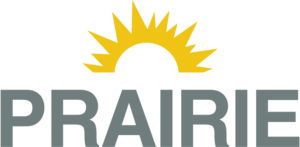To be successful in your sport, you need to be able to move well and move quickly. In training, certain movements are broken down that mimic similar positions an athlete may go through when participating in their particular sport. The one variable that separates the elite athletes from their not so elite counterparts is power.
A more powerful athlete will be able to jump higher, or accelerate and decelerate quicker being able to beat their opponent at any task. In strength training, the ability to produce force is developed. Force = Mass x Acceleration, so to create more force, an object that is being moved can either get heavier or can be accelerated faster. Power = Force x Velocity, so high power can be produced from moving a very heavy object slowly, a light object fast, or some combination of the two. Increasing strength in certain exercises will definitely increase power but to truly maximize it, the speed of movement needs to be taken into strong consideration. You may have heard the term “triple extension” but have no clue what it means. The word triple refers to 3 different joints; the hips, knees, and ankles, and extension at these joints means the muscles controlling the action are lengthened so these joints go from being bent to straight.
The success of all explosive lower body movements, and even upper body movements such as throwing a ball, depend on how well an athlete can extend at these three joints. In the weight room, training can be manipulated to increase power because the weights can be changed. Many exercises that are good for developing force are compound movements that cause the body to coordinate movements across multiple joints. Take a squat for example, it’s a great lower body exercise for athletes because it challenges the ability to produce force using muscles that control the three joints mentioned before. Olympic lift variations are very popular to begin to add a load to these explosive triple extension exercises. The specific names are known as the clean and jerk, and the snatch. While effective at increasing power output, they’re extremely technical exercises and require time and patience to learn progressions to perform the full variation with optimal movement. Some coaches realize that other exercises can be used in place that also work on triple extension, and like to avoid Olympic lifts due to the time invested to be proficient enough to develop power using them or based on the training age of the athlete. Others also avoid using them with athletes because they feel they don’t need to train people to be good at Olympic weightlifting unless they’re competing in that event. Time that is given up on the acquisition process of these movements could be replaced with ones that will develop triple extension but require a fraction of the time and learning it takes place to master. Long story short, as trainers, we have to weigh the amount of time and energy put into something along with what kind of outcome we can get in the long run. Although some exercises look ‘cool’ or off of the norm, we still have to take into consideration that simple movements like squats and lunges can work just as effective, if not more if we load them properly.
Triple extension is very important for all jumping movements. With a proper weight training program, athletes can increase their vertical jump, speed, and decrease their chances of injury.
So the next time you see an exercise that you really think “looks cool” take these questions into consideration:
How long does it take to perform this effectively?
What am I gaining by doing this that I’m not gaining already?
Do I already do something similar?
How can I load and de-load this exercise?
Happy training!


